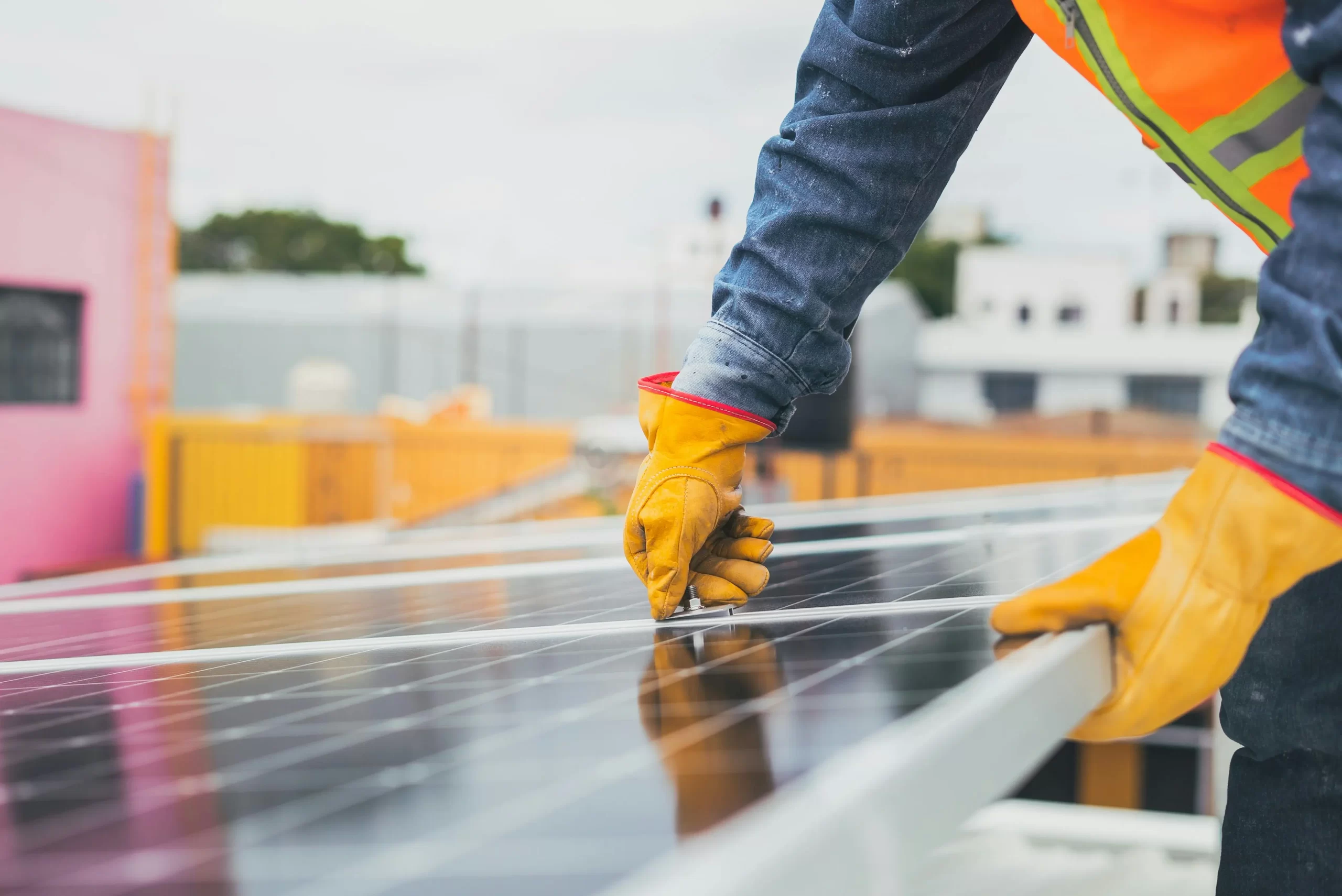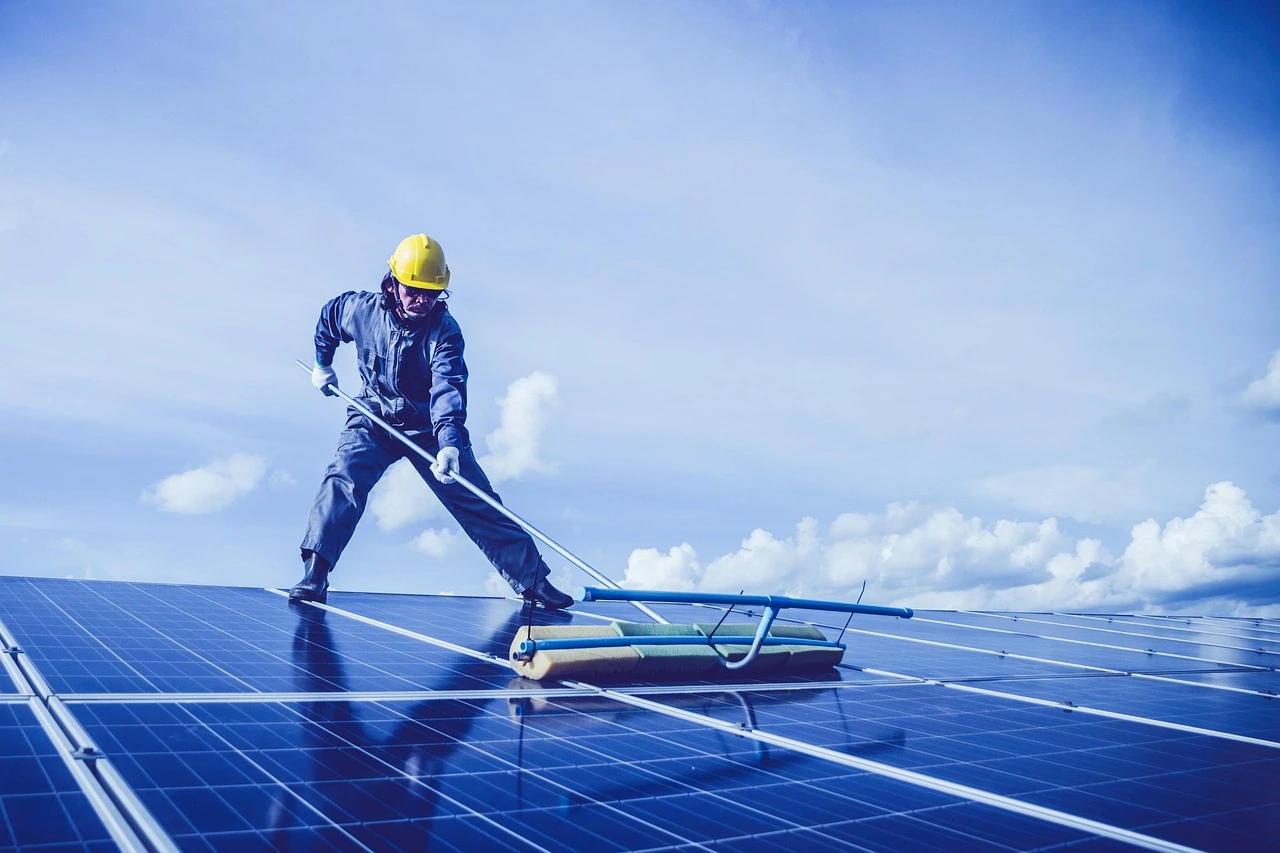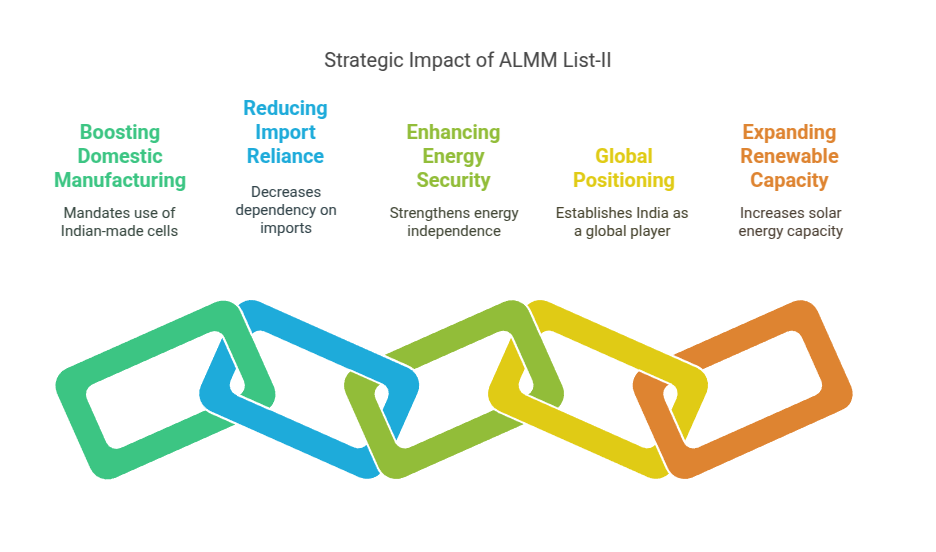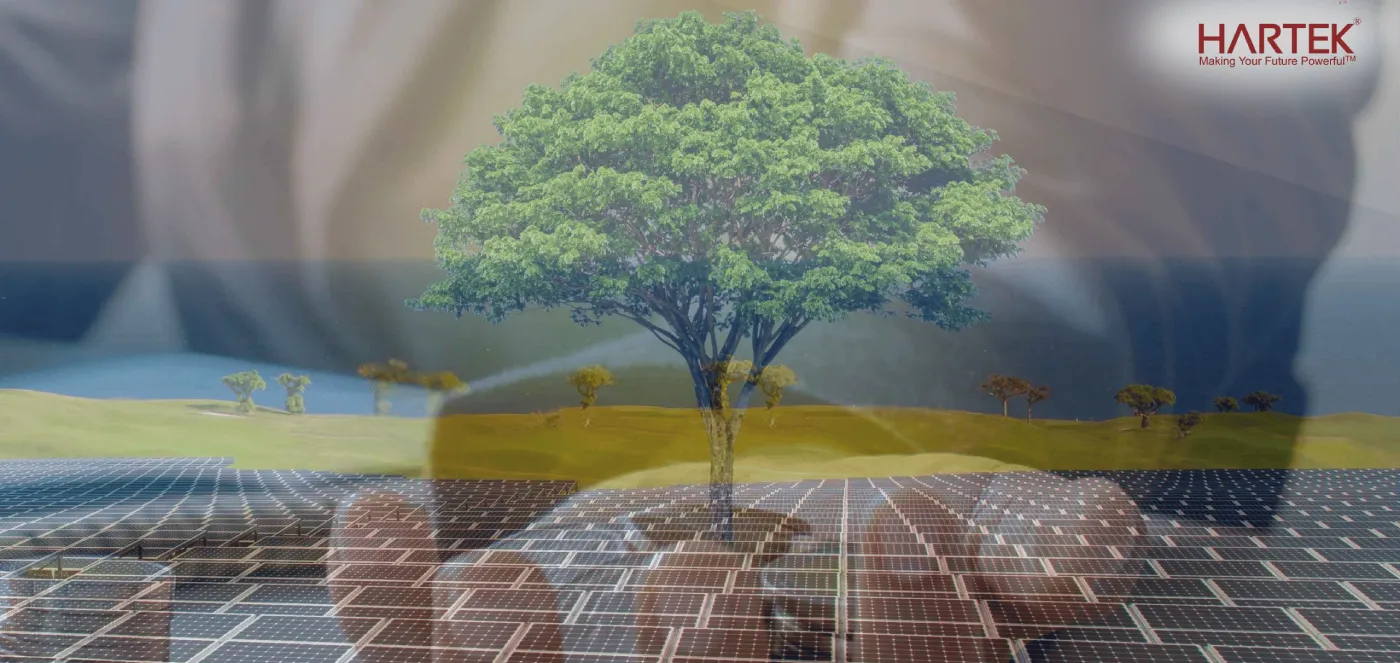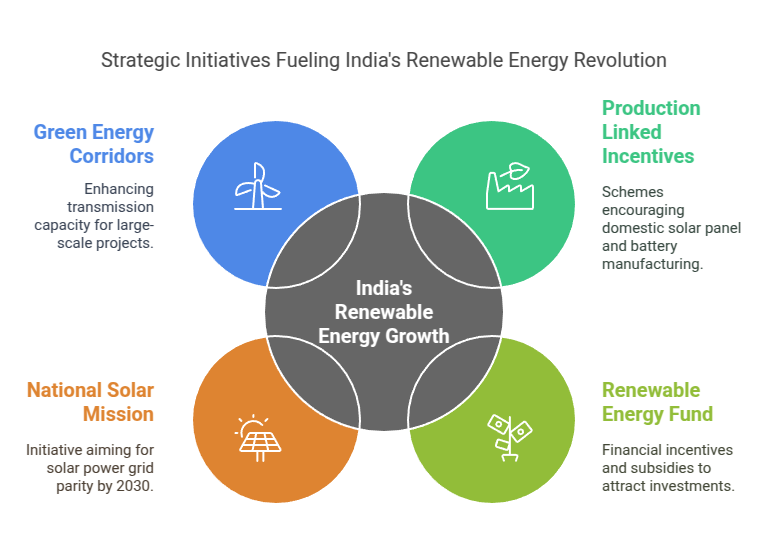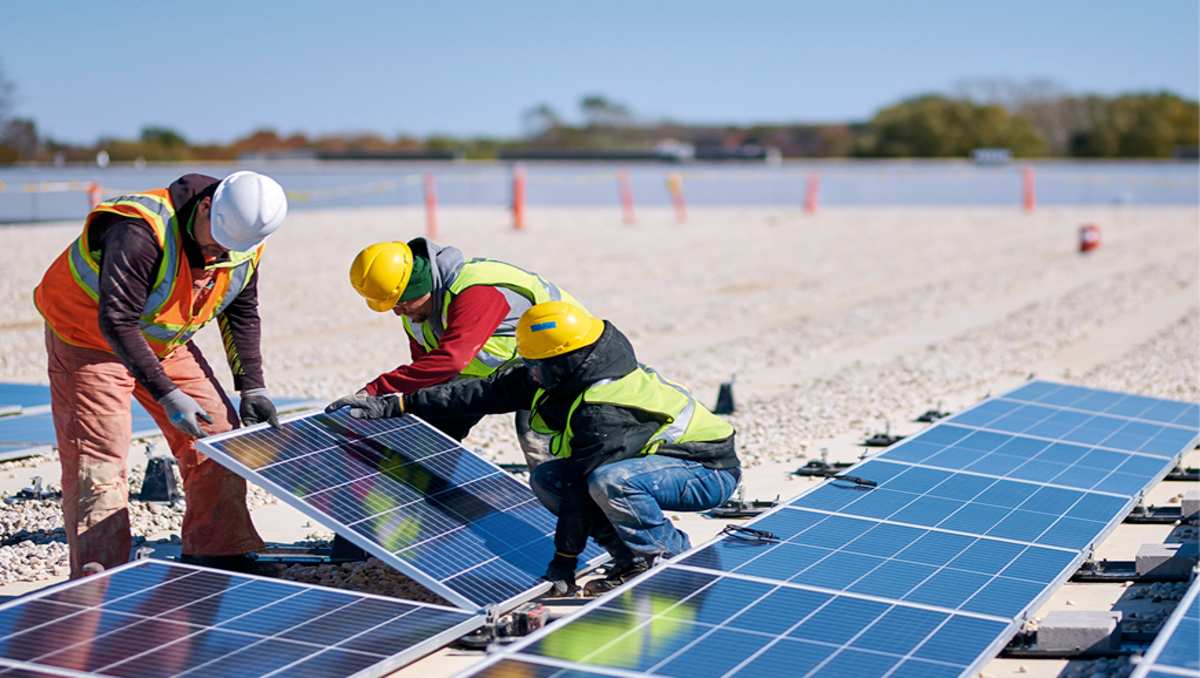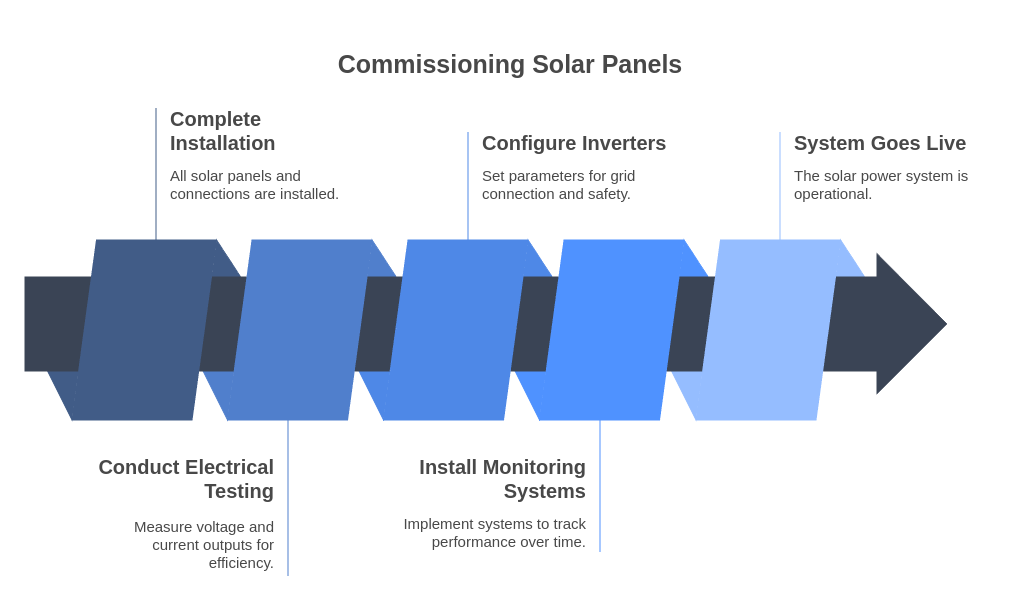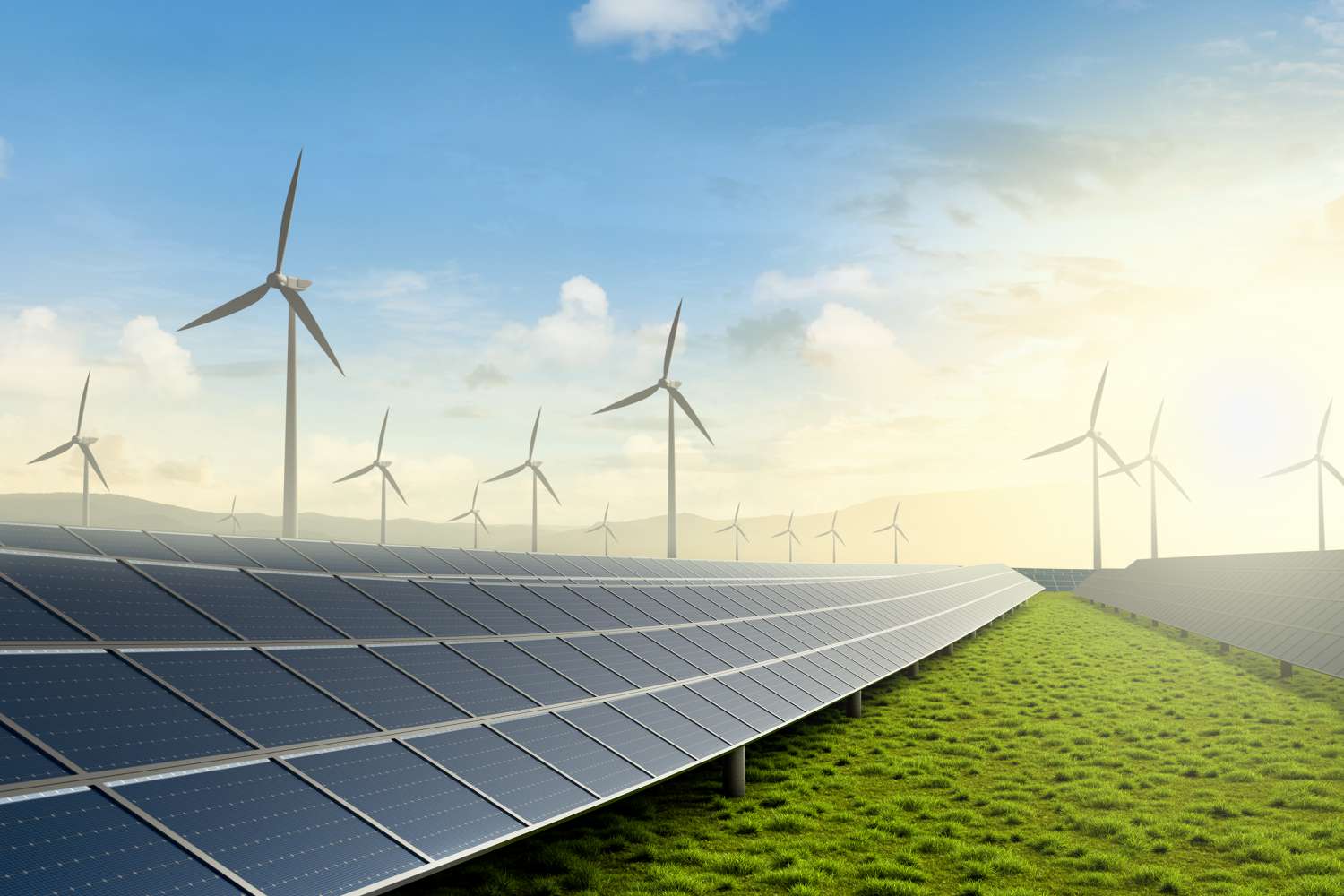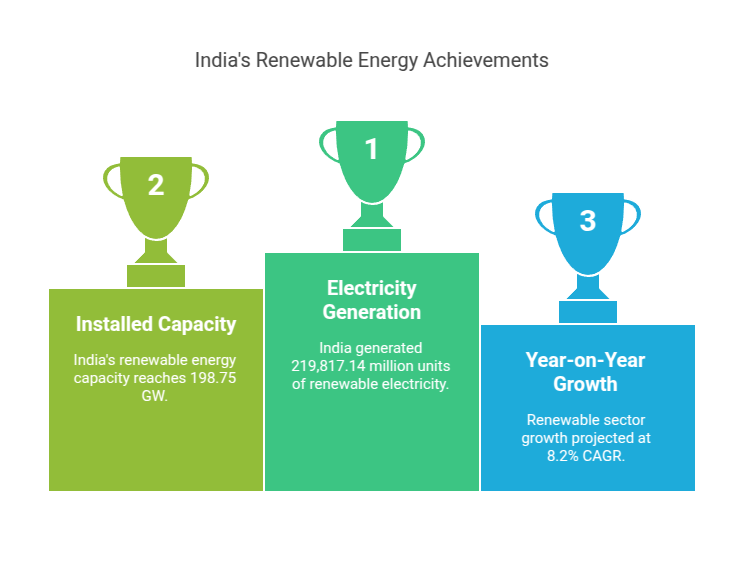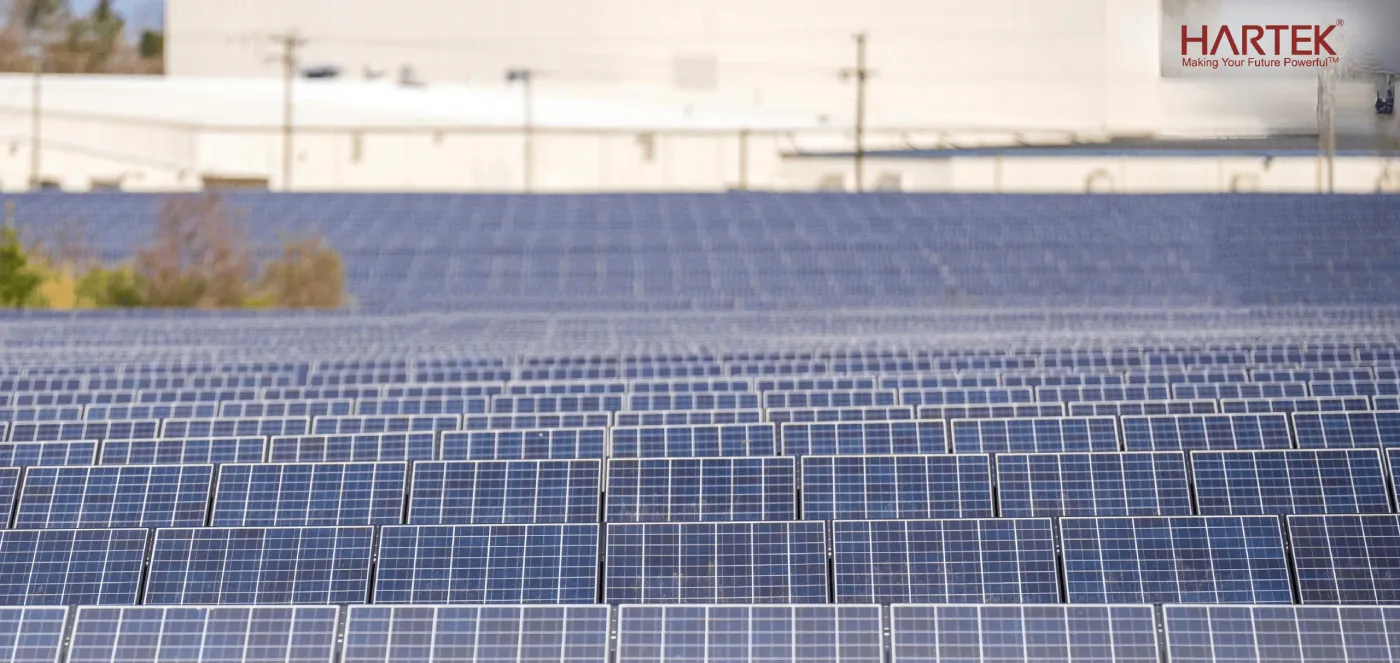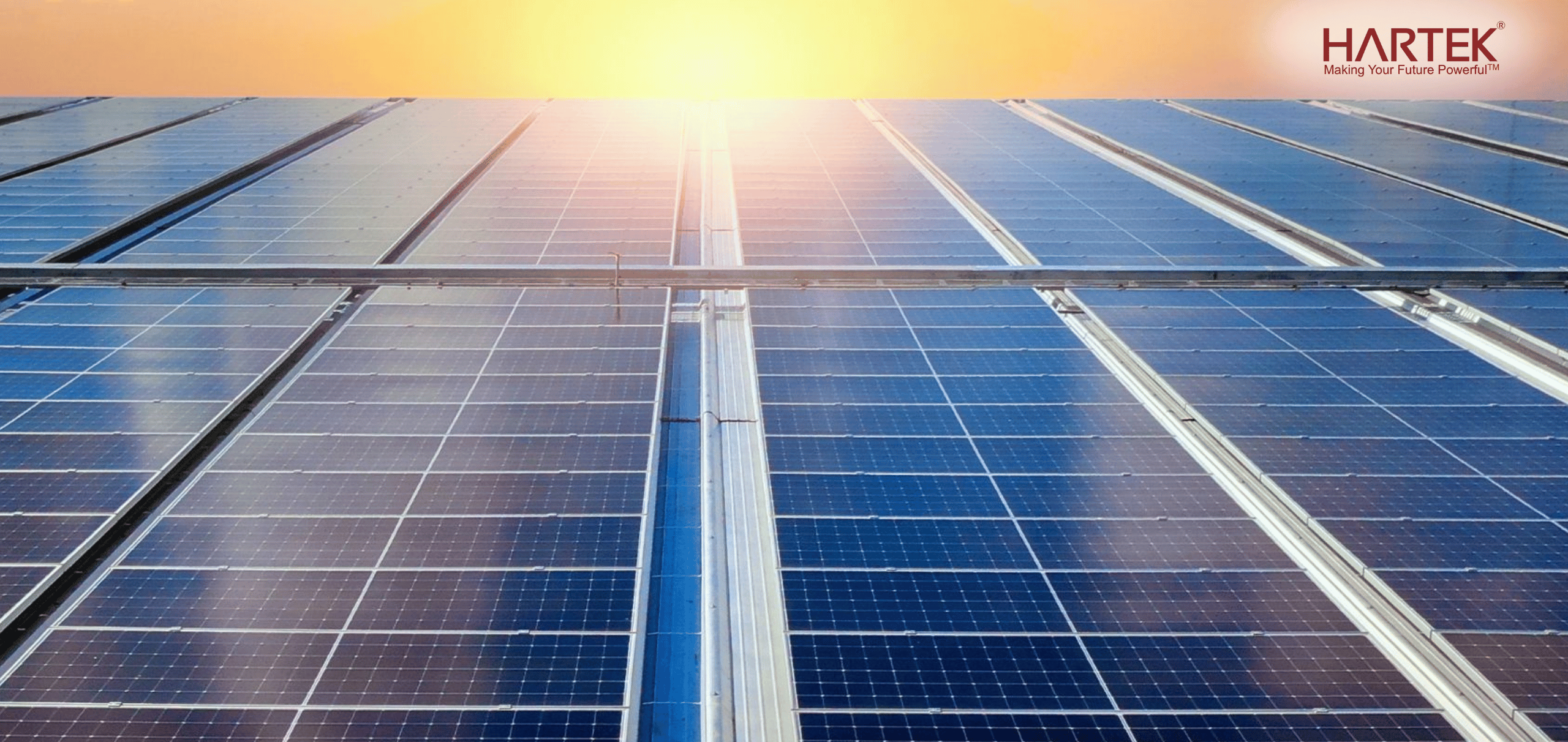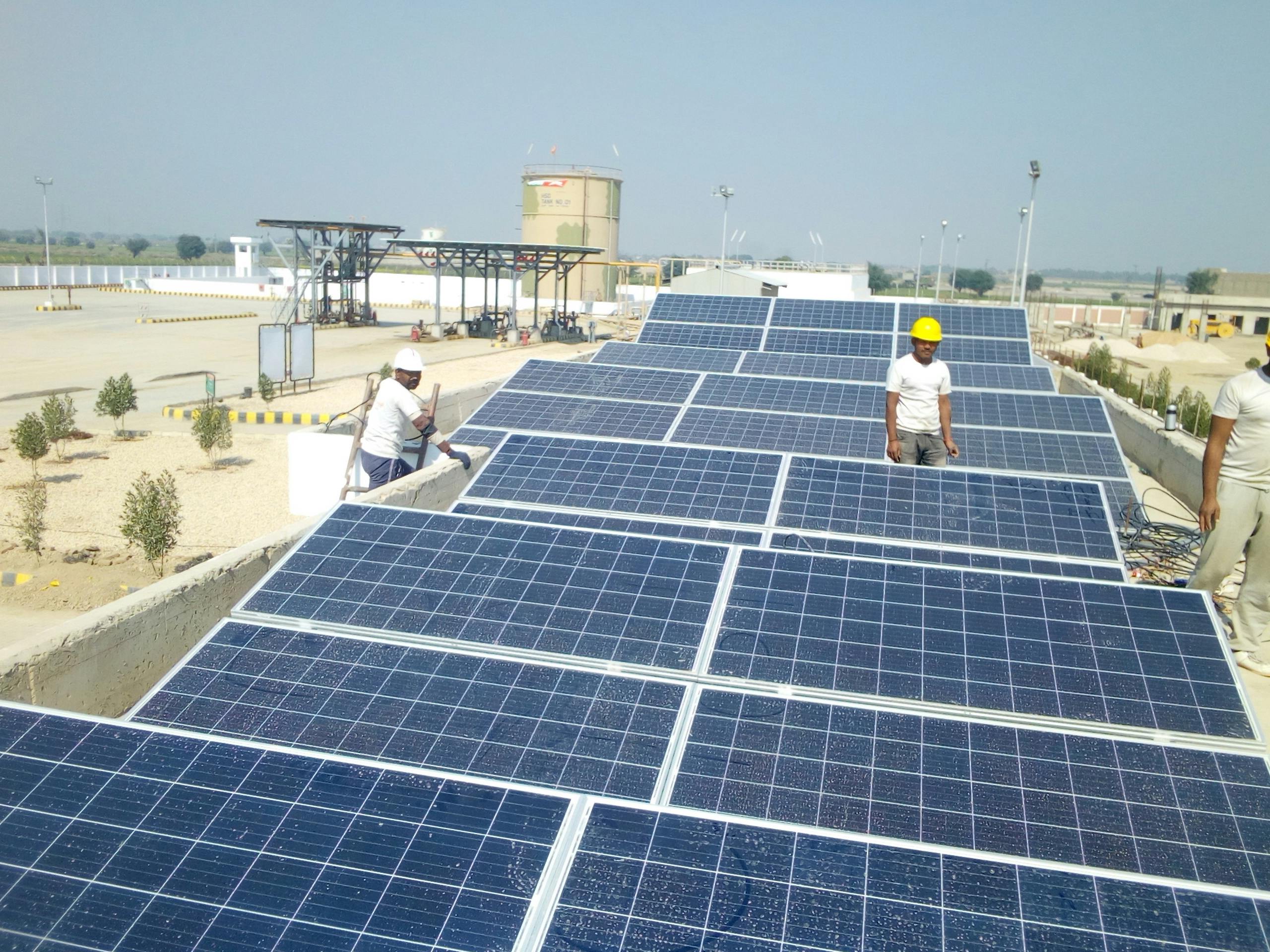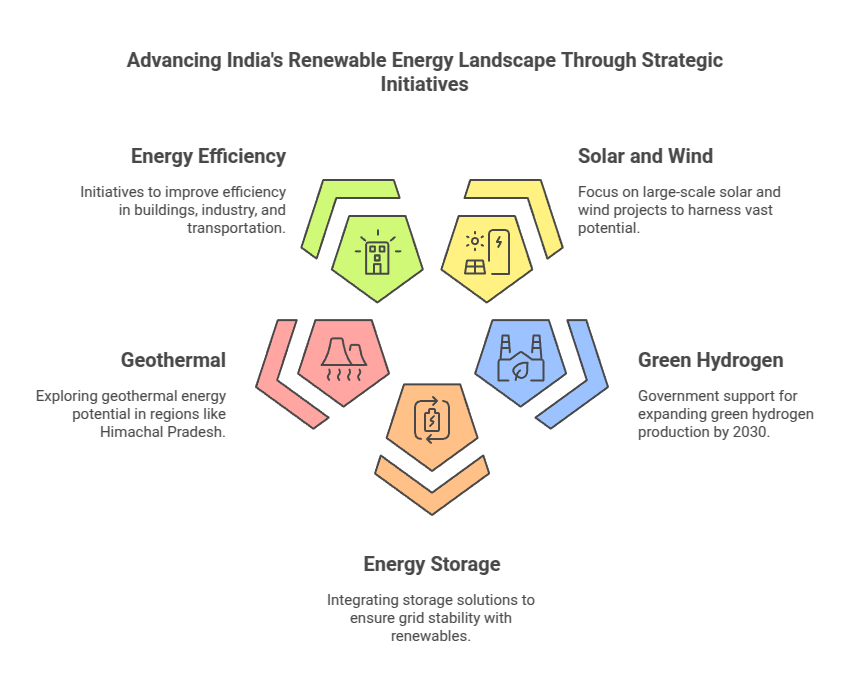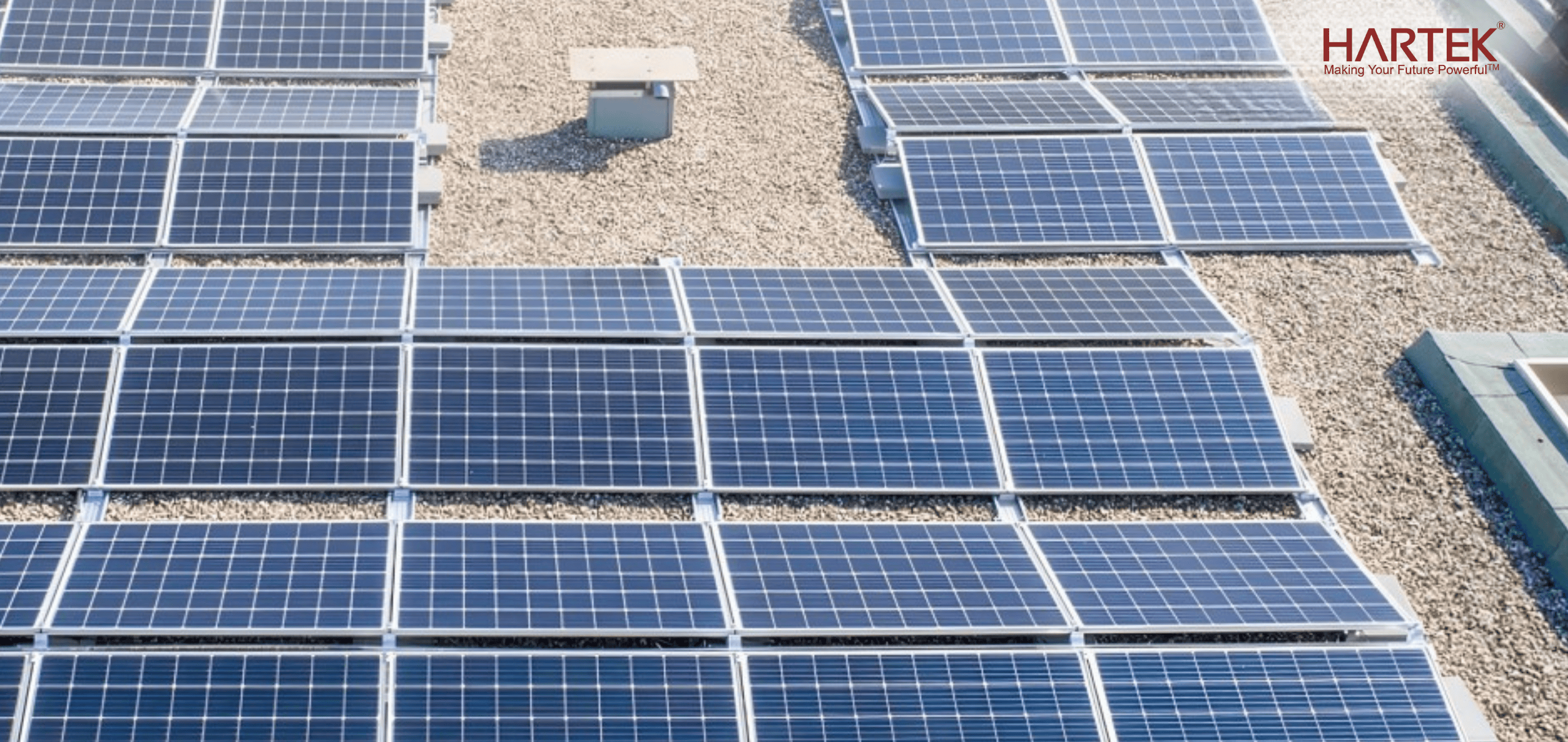India is witnessing a change in the power industry. The sector, with immense opportunities and challenges, is growing due to increasing demands in the country as its population expands. A significant influence on this transformation is the shift toward renewable energy in India.
This blog elaborates on how the energy transition is reshaping power industry companies, their difficulties, and how companies such as Hartek play a crucial role in advancing India’s energy landscape.
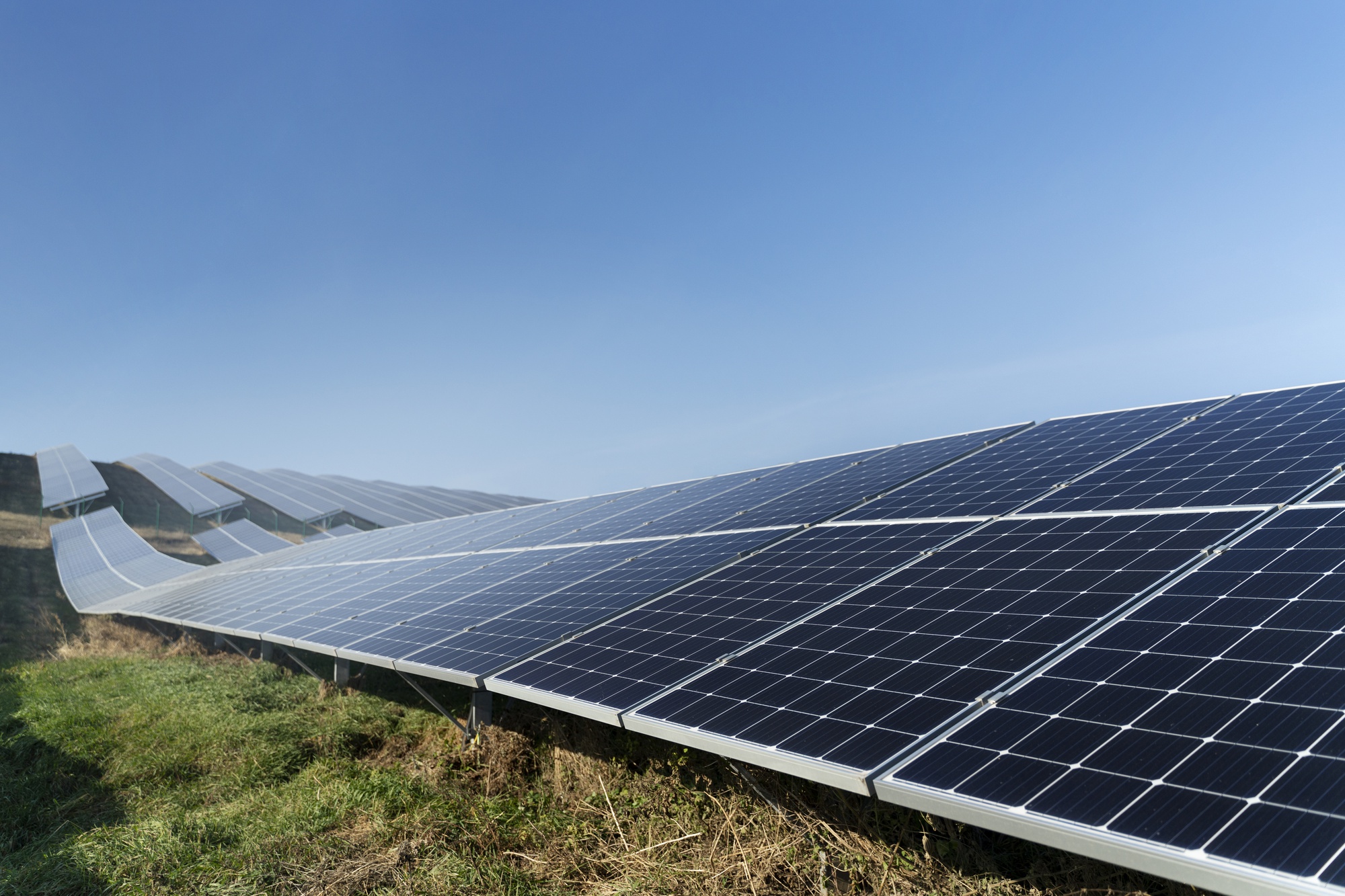
Continue reading to know the rest of the details!
Trends of India’s Power Sector
-
Transition to Renewable Energy
The Renewable Energy target set for 2030 is 500 GW and is currently at 200 GW as per the 2024 estimates. The targets set for renewable energy in India are fairly aggressive. Such changes are necessary to reduce the dependence on fossil fuels, and in India, companies such as Hartek focus on this transition. All infrastructure support is provided by us and our specialization is in large-scale Solar EPC projects which include Land-based Solar, C & I rooftop solar, and floating solar.
-
Technological Advancements and Smart Grids
Smart technology integration is changing the face of the Indian power sector. With its experience in electrical infrastructure, Hartek ensures that smart grids and automation technologies are integrated into the power network. The technological advancements in this regard improve the efficiency of the grid, reduce transmission losses, and provide a stable and reliable power supply. Smart grids also mitigate the variable nature of renewable energy sources in the implementation of the energy transition.
-
Government Initiatives and Policy Support
The government of India has been keen on supporting the enhancement of the energy sector. Schemes such as UDAY (Ujwal DISCOM Assurance Yojana ) and National Electricity Policy focus on maintaining good financial health, providing electricity to everyone, and promoting renewable energy.
EPC (engineering, procurement, and construction) leader Hartek is now actively involved with government initiatives and leads in efficiency and sustainability in energy through infrastructure development.
Challenges the Power Industry in India Faces
India’s power industry faces some significant challenges that may bar growth, even though progress is happening:
- The transition of Energy: The industry is facing the challenge of blending renewable energy into the mix is maintaining the stability of the grid. How the grid manages unbalanced sources like wind and solar to keep the power supply as stable as it has been to date is extremely crucial.
- Infrastructure Gaps: There are still electricity shortages in rural areas, and demand is much higher than supply with the existing infrastructure. Thus, huge investment is needed in the infrastructure of the transmission and distribution networks.
- Regulatory and Financial Challenges: Delays in the realization of projects in the sector are caused by regulatory approvals and land acquisition; complex financial models are another challenge that affects the growth pace in this sector.
Indian Power Companies Opportunities
The prospects of the power sector of India are optimistic and full of promise.
1. Renewable Energy Investment: Considering the commitment of the Indian government to increase renewable energy capacity, Hartek is poised to take the lead in solar EPC Land-based, C & I rooftop solar, and floating solar and energy storage projects. As the country pushes for a greener future, demand for infrastructure development is likely to rise, and thus, this is a huge opportunity for the company.
2. Electrification of Rural Areas: The push for rural electrification presents new markets for energy distribution companies. With the government’s support and focus on providing clean and reliable power, there is a growing demand for companies like Hartek to deploy energy solutions that benefit these underserved areas.
3. Technological Innovation: With India moving towards a cleaner energy system, Hartek is innovating with advanced technologies in grid management, energy storage, and power distribution. The technology will make energy transmission and management efficient and will help to solidify the company’s position in the future of India’s power sector.
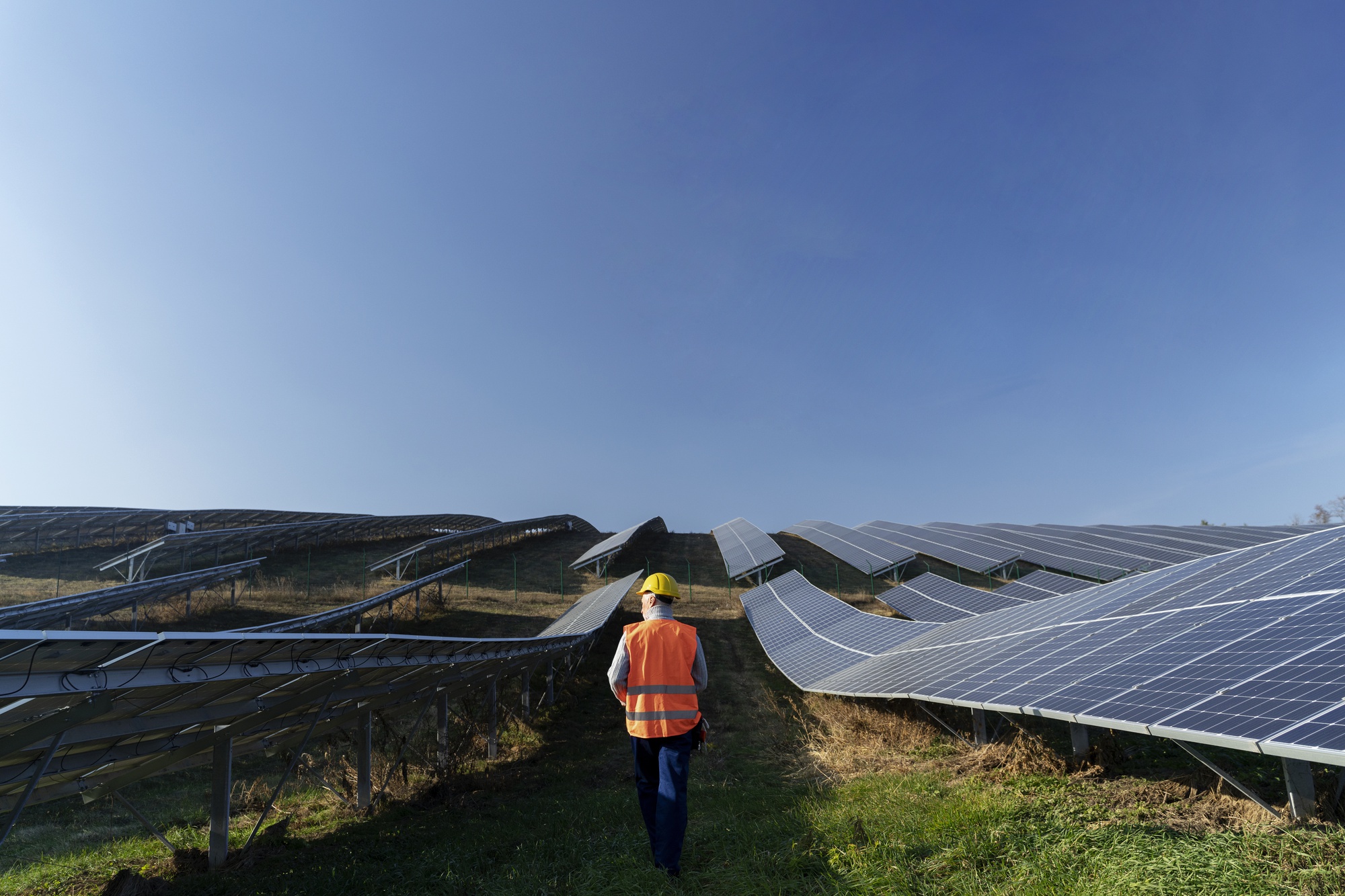
HARTEK’s Role in Advancing India’s Power Industry
We play a crucial role in the advancement of the power industry. Have a lot at our contribution:
1. Strengthening Power Transmission Networks
Hartek is leading the charge to boost the power transmission capacity of India. The company has just won a project in Gujarat from Power Grid Corporation of India Limited (PGCIL) valued at Rs 117 crore. The project involves substation upgradation and incorporation of a new 765kV AIS in the existing line. It aims to strengthen India’s network so that it can take more renewable energy flow.
2. Integration of Renewable Energy
Hartek has helped India integrate renewable energy into its large projects. The company assisted in the development of a 300 MW solar power plant in Rajasthan. This is among the largest solar farms in that region. This project will benefit India by fulfilling the country’s renewable energy goals and enhancing the state’s power infrastructure even further.
3. Energy Efficiency and Sustainability
The core of sustainability at Hartek lies in having modern monitoring systems, such as SCADA, to manage and optimize the electrical grid not only with greater efficiency in operation but also conserving energy in perfect sync with long-term goals aligned for India in securing a greener future.
Conclusion
We hope you find this blog helpful. The power sector growth in India is key to the future of the country. The move towards renewable energy in India is driving this transformation. Though industry faces several hindrances, yet there is great scope for expansion in the domains of renewable energy, rural electrification, and new technology and companies like Hartek are ahead in leading the change that would build up the energy future of India.
The ongoing energy transition requires us at Hartek Group to innovate in line with the renewable goals for our nation. Investment in renewable infrastructure, integration of advanced technology, and pursuit of an ever-greener vision is a move that builds toward an effective, sustainable future for India.
Frequently Asked Questions
1. What is driving the transition to renewable energy in India?
India’s transition to renewable energy is driven by rising electricity demand, government policies, and a commitment to reducing dependence on fossil fuels. The country aims for 500 GW of non-fossil fuel capacity by 2030.
2. What role does Hartek play in India’s renewable energy sector?
Hartek is a leading EPC company specializing in solar projects, power transmission, and smart grid integration. It develops large-scale solar farms, strengthens grid infrastructure, and promotes sustainable energy solutions.
3. What are the biggest challenges in India’s power industry?
The key challenges include integrating renewable energy into the grid, infrastructure gaps in rural areas, and regulatory and financial hurdles that delay project implementation.
4. How is technology improving India’s power sector?
Technological advancements like smart grids, energy storage, and SCADA systems help improve power efficiency, reduce losses, and stabilize the grid despite variable renewable energy sources.
5. What are the future opportunities in India’s renewable energy sector?
Opportunities include increased investments in solar and wind power, rural electrification projects, and the adoption of advanced technologies to enhance energy efficiency and grid management.

